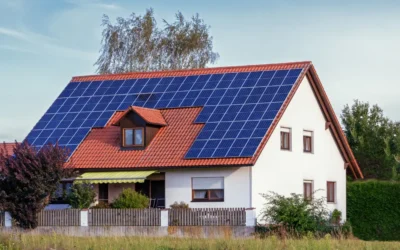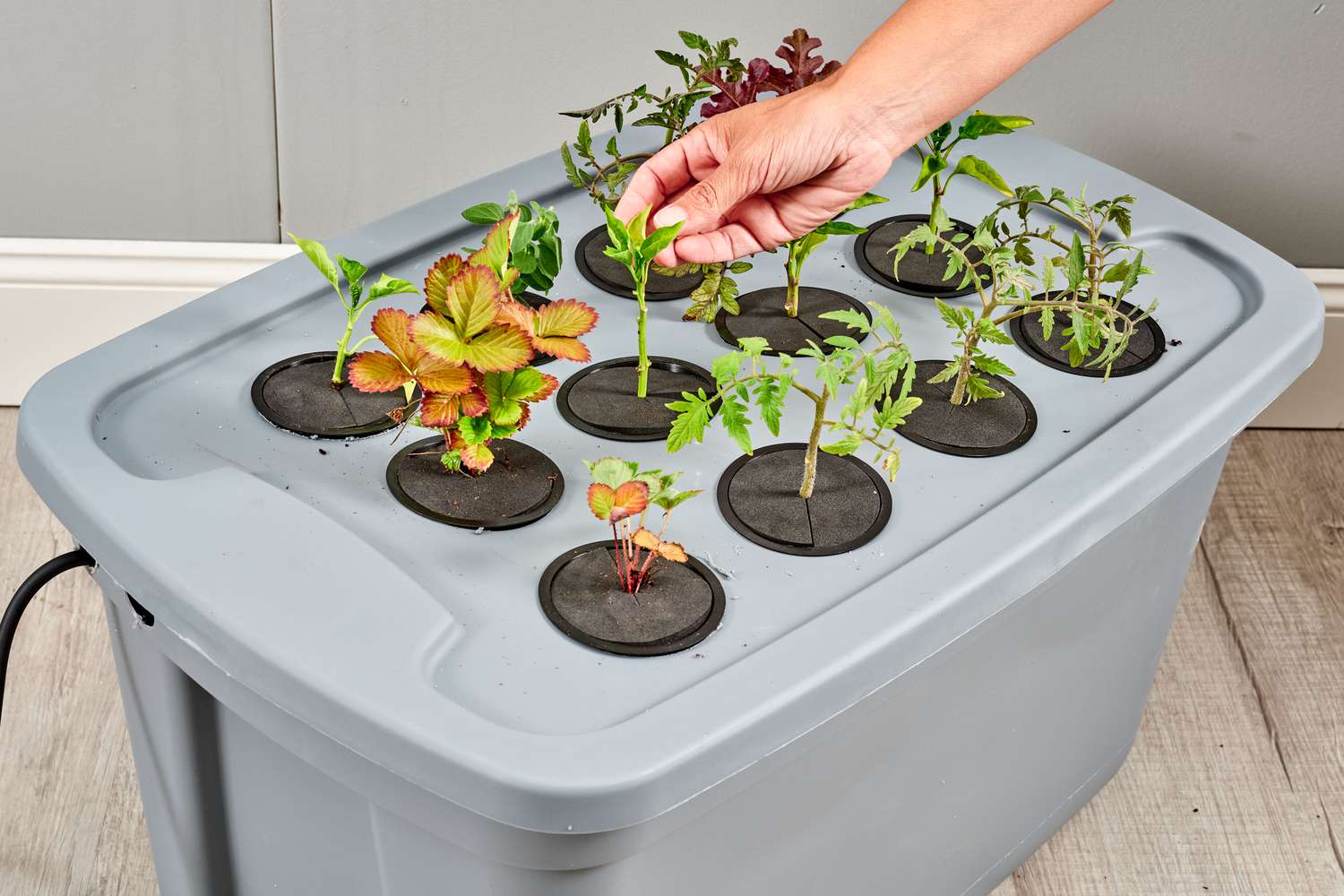To build a hydroponic garden, you need to follow a few simple steps.

Credit: m.youtube.com
Choosing The Right Location
Choosing the right location is vital when building a hydroponic garden. Consider factors like sunlight exposure, accessibility to water, and temperature control to ensure the success of your project.
Indoor Or Outdoor
The first consideration when choosing the right location for your hydroponic garden is whether you want to set it up indoors or outdoors. Indoor gardens offer more control over environmental factors such as temperature, humidity, and pests. They are ideal for those who have limited space or live in areas with harsh climates. On the other hand, outdoor gardens can benefit from natural sunlight and typically have more space for larger setups. Consider your available space and personal preferences when deciding between indoor or outdoor hydroponic gardening.
Availability Of Light
One of the most important factors for a successful hydroponic garden is the availability of light. Plants need light to carry out photosynthesis, so it’s crucial to choose a location that provides adequate light for their growth. If you’re setting up an indoor garden, you’ll need to invest in grow lights that mimic the intensity and spectrum of natural sunlight. Position the lights at an optimal distance from the plants to ensure they receive the right amount of light. If you’re planning on an outdoor garden, choose a location that receives ample sunlight throughout the day to support healthy plant growth.
Accessible Water Source
Another key consideration when choosing the right location for your hydroponic garden is the accessibility of a water source. Hydroponic systems require a constant supply of water to nourish the plants’ roots. Ensure that your chosen location has a convenient water source nearby. This could be a faucet, a hose, or even a rainwater collection system. Easy access to water will make it simpler for you to maintain the proper water levels in your hydroponic system and ensure the plants receive the necessary nutrients.
Selecting The Hydroponic System
When it comes to building a hydroponic garden, one of the most crucial steps is selecting the right hydroponic system. The choice of a hydroponic system significantly impacts the growth and overall success of your plants. Different systems have their own unique benefits and considerations, so it’s important to understand the options in order to make an informed decision.
Wick System
The wick system is a beginner-friendly and affordable option for those new to hydroponic gardening. It operates on a passive system, drawing nutrient solution up from a reservoir into the growing medium through a wick. This system is best suited for smaller plants with low watering needs, as it may struggle to adequately deliver nutrients to larger or more demanding crops.
Water Culture System
The water culture system involves suspending the plants’ roots in a nutrient solution, with the support of a floating platform. This method ensures constant water and nutrient exposure to the roots, promoting rapid growth. However, it’s essential to regularly monitor and maintain the nutrient levels in the reservoir to prevent any imbalances that could harm the plants.
Nutrient Film Technique (nft) System
The nutrient film technique (NFT) system is a popular choice due to its efficient use of water and nutrients. It involves a continuous flow of nutrient solution through a narrow channel, providing roots with essential nutrients and oxygen. Keep in mind that this system requires a reliable power supply to maintain the flow of the nutrient solution, and regular monitoring to prevent potential blockages.
Gathering The Necessary Equipment
Before you start building your hydroponic garden, it’s essential to gather all the necessary equipment. Having the right tools and supplies will ensure the success of your garden and allow your plants to thrive. Here are four key components you’ll need when setting up your hydroponic system:
Grow Lights
The first item on your list is the grow lights. Since hydroponic gardens are grown indoors, you’ll need artificial lighting to provide your plants with the energy they need for photosynthesis. LED grow lights are the most popular choice for indoor gardening due to their energy efficiency and ability to emit the right light spectrum for plant growth. Ensure that you choose lights with a sufficient wattage and adjustable height settings to accommodate different plant stages.
Growing Containers
The next essential item is the growing containers. These containers will hold the plants and the nutrient solution. When selecting containers, consider the size of your plants and their root systems. It’s recommended to choose containers made of durable materials like plastic or fabric, with proper drainage holes to prevent waterlogged roots. Additionally, it’s best to have separate containers for each plant to avoid the spread of diseases or nutrient imbalances.
Growing Medium
Unlike traditional soil-based gardening, hydroponic gardens use a growing medium to support the plants’ roots. The growing medium helps retain moisture and provides stability for the plants. Some popular options for hydroponic growing mediums include coco coir, Rockwool, perlite, and vermiculite. Consider the specific needs of your plants and choose a growing medium that promotes healthy root development and aeration.
Nutrient Solution
To support proper plant growth, you’ll need a nutrient solution specifically formulated for hydroponic systems. This solution contains all the necessary macro and micronutrients that your plants require for healthy development. You can either purchase a pre-made nutrient solution or mix your own using commercial hydroponic nutrient concentrates. Be sure to follow the manufacturer’s instructions and check the solution’s pH level regularly to maintain optimal plant health.
By gathering these essential tools: grow lights, growing containers, a growing medium, and a nutrient solution, you’ll be well on your way to building a successful hydroponic garden. These components work together to provide your plants with the optimal growing conditions they need to thrive without soil. Now that you know what you need, you can start setting up your hydroponic system and enjoy the benefits of growing fresh, healthy produce right at home.
Preparing The Growing Area
Before you start setting up your hydroponic garden, it is essential to properly prepare the growing area. This step lays the foundation for a successful and flourishing garden. In this section, we will discuss three crucial steps: cleaning the area, setting up the hydroponic system, and checking for proper ventilation.
Cleaning The Area
To create an optimal environment for your hydroponic garden, you must begin by thoroughly cleaning the growing area. Remove any debris, weeds, or obstructions that could hinder the system’s operation or impact the health of your plants. Additionally, eliminate any pests or insects that may have taken residence.
Once the area is cleared, it is recommended to sanitize the space to prevent the spread of disease. This can be done by using a mild bleach solution to disinfect surfaces and equipment that will be in contact with your plants.
Setting Up The Hydroponic System
The next step in preparing the growing area is setting up your hydroponic system. This involves assembling the necessary components, such as nutrient reservoirs, grow trays, pumps, and timers. Ensure that each component is placed in the appropriate location and securely connected to avoid any leaks or malfunctions.
An essential aspect of the hydroponic system setup is determining the right lighting. Depending on the type of plants you wish to grow, you will need to select suitable grow lights. LED lights are an energy-efficient and popular choice for hydroponic gardens, providing the necessary spectrum for optimal plant growth.
Checking For Proper Ventilation
Proper ventilation is crucial for maintaining the ideal environment within your hydroponic garden. Without adequate airflow, high humidity and stagnant air can lead to disease and mold growth, negatively impacting your plants.
Ensure that your growing area has proper ventilation by setting up fans or an exhaust system. This will help to regulate temperature and humidity levels, as well as prevent the buildup of carbon dioxide and other harmful gases. Regularly check that your ventilation system is functioning correctly to avoid any issues.
By following these steps to prepare your growing area, you are setting yourself up for hydroponic gardening success. A clean and well-configured environment, combined with proper ventilation, will provide your plants with the best conditions for growth and productivity.
Planting And Maintaining The Hydroponic Garden
When it comes to hydroponic gardening, planting and maintaining your garden is a crucial aspect that requires attention to detail. Choosing the right plants, planting the seeds or seedlings, monitoring and adjusting nutrient levels, and managing pests and diseases are all essential tasks in ensuring a successful hydroponic garden.
Choosing The Right Plants
Before starting your hydroponic garden, it’s essential to select plants that thrive in a soil-less environment. Research which plants are suitable for hydroponic cultivation, considering factors such as light requirements, growth habits, and nutritional needs.
Planting The Seeds Or Seedlings
When planting in a hydroponic system, it’s crucial to handle seeds or seedlings with care to ensure their healthy development. Once planted, provide the appropriate conditions for optimal growth, including adequate lighting, temperature control, and proper nutrient delivery.
Monitoring And Adjusting Nutrient Levels
Regular monitoring of nutrient levels is vital for the health of your hydroponic garden. Use a pH meter and a TDS meter to check and adjust the nutrient solution, ensuring that the plants receive the necessary balance of nutrients for robust growth.
Managing Pests And Diseases
Preventing and addressing pest infestations and diseases is critical in maintaining a thriving hydroponic garden. Implement preventative measures, such as maintaining cleanliness and using natural pest control methods, to minimize the risk of infestation and disease.

Credit: m.youtube.com
:max_bytes(150000):strip_icc()/diy-hydroponic-systems-5093454-hero-e47eb8c4d31146ea90b44c18b7345807.jpg)
Credit: www.thespruce.com
Conclusion
Building a hydroponic garden is an innovative and sustainable way to grow fresh produce. By following the steps outlined in this guide, you can create your own thriving garden at home. Embracing this method can lead to a bountiful harvest and a more eco-friendly approach to gardening.
Start your hydroponic journey today!








